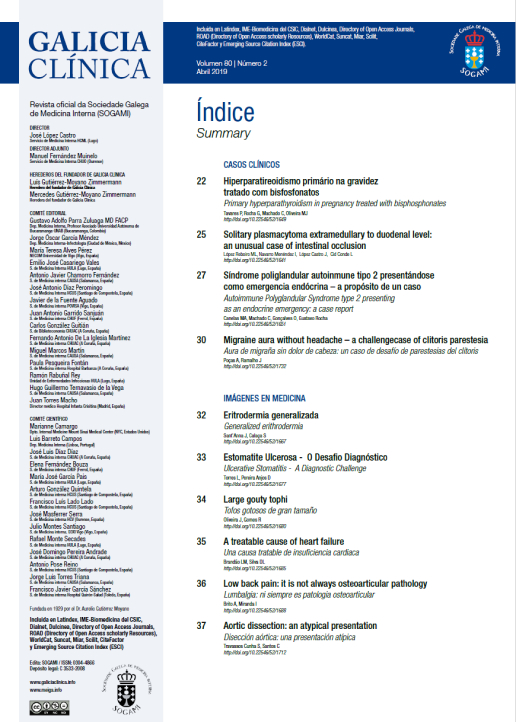Abstract
Gout results from the deposition of uric acid crystals at various locations (preferably joints, subcutaneous tissue, and kidney). About seven percent of the adult population develop hyperuricemia, but only about one percent progress to gout. We report the case of a 57 year old patient with a history of hyperuricemia with 30 years of evolution, hypertension and obesity. Medicated previously with colchicine, indomethacin and lisinopril and hydrochlorothiazide. Admitted by complaints of dysarthria and hypertensive crisis. In the objective examination, blood pressure 160/95 mmHg, left central facial paresis, without other neurological signs, xanthelasmas, multiple massive gouty tophi, at the level of the joints of the hands, feet, and at the elbows, conditioning marked joint deformation and functional impotence, motivating inability to walk. It also presented deposition of crystals at the subcutaneous level, even with ulcerated wounds in the right lower limb, giving rise to crystals of uric acid. Laboratory tests without leukocytosis, urea 146 mg / dl, creatinine 2.15mg / dl, uricemia 10.3mg / dl. The renal function prior to this hospitalization was unknown. He performed a cranial CT scan that showed only chronic vascular leukoencephalopathy.
The radiograph of the hands showed destruction of the distal phalanges, with peri-articular erosions and exuberant inflammation of the soft parts involving crystals of uric acid. Renal echography showed areas of diffuse atrophy of the renal parenchyma, with loss of parenchymal-sinusal differentiation, compatible with a diagnosis of chronic renal disease; contributed to this, most likely, both hypertension and hyperuricemia. The patient was discharged with allopurinol and prednisolone; his glomerular filtration rate was greater than 50mL/min, not requiring any adjusting of the dose of allopurinol. He was observed two months later, already clinically improved, with gait without imbalance and with significant weight loss.
We assumed that this disorder made part of a metabolic syndrome, the patient was obese, had hypertension and dyslipidemia. Hyperuricemia was not an isolated disorder, so no hereditary cause was suspected despite the early onset.
The severity and size of the gouty tophs conditioned over the years, a degree of disability that ended with some regression after the institution of adequate therapy.
© 2019 Galicia Clínica.
Complete article | Pdf article


